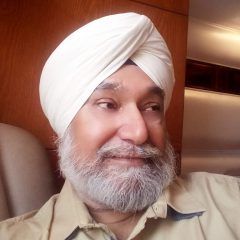Waris Shah presents a most enchanting outlook on feminine beauty. He describes Heer in these eloquent terms; her brow has the shine of the Moon, her complexion is of the wine hue, her eyes take after those of a musk deer; she has the sway of a royal elephant, lips of rubies, chin of an English apple, height of a heavenly cypress, neck of a crane, breast of transparent marble; cheeks like roses, teeth like a bouquet of jasmines, nose as the tip of a sword, tresses like a lump of snakes, fingers like tender beans and hands like leaf cups of chinar.
It is a rich description, full of literary tropes like similes and metaphors. But what is interesting to note is that whatever attributes of beauty he assigns to different body parts of Heer are found in the non-human world. All his comparable objects may be beautiful but they belong to the animal or natural world. And frankly, they don’t tell us of any quality, but only present a particular image or figure. For example, what feature of human beauty a lump of snakes or leaf cups of chinar signify? Imagine, if all those natural items were arranged in the form of a collage of human bust, would they make an astounding picture of beauty, something that we could call perfect or supremely attractive?
What then are the real attributes of beauty that are indigenous or specific to Homo sapiens?
For a long time, ancients and scientists have been trying to define ideal beauty, particularly the one that belongs to the female human form? According to them, there is something called a golden ratio that determines the parameters of a female face to be pronounced an ideal beauty. Taking a cue from Leonardo da Vinci’s images they confirm that a face that is roughly 1.5 times longer than its width is the most alluring one.
Notwithstanding the complexity of the issue, scientists expanded on this ratio and reduced measure of beauty to a statistical chart, a kind of mathematical formula that anyone can carry in their wallet for ready reference. Besides length of the face, the other golden proportions are: distance from hairline to the middle of the eyes and from there to the bottom of nose and from there to the bottom of chin is equal; the length of the ears is equal to the length of the nose and the width of each eye is equal to the gap between the eyes. No wonder, cosmetic surgeons love these bio-statistical equations.
Some scientists even speak of such minute measures as the lines converging on the centre of chin from outside the cheekbones form an angle of 80o , the width of the mouth is not less than 50% of the width of face and the most important, the circumference of hips is 1.5 times that of waist. Remember the old times when the news about Miss World was accompanied by figures like 34-24-36. It is obvious the female torso was understood as an extension of her face. How very precise and perfect! And boring too at the same time. I wonder whether these bio-staticians are scientists or carpenters who look for such a fine symmetry in human form.
Scientific measure of beauty is heartless, feelingless and perhaps too superficial for those who look at human beauty beyond the physical shape and size. For ethical viewers human beauty lies not in curves, angles or skin tones, but in the quality of human conduct. They think our perception of beauty undergoes a change when we see someone whose visage is overflowing with the milk of human kindness, or whose mind and fingers weave a magical image or whose voice resonates with the symphony of human emotions or whose smile is beatific or intellect tantalisingly sharp.
These people consider human beauty ludicrous if it is merely skin-deep and purvey the idea of inner beauty. They presume themselves to be superior as they speak of higher truth that has the wisdom and morality of sages. But we know, not everyone agrees with them. To be more realistic, what has morality got to do with beauty? Most observers consider beauty amoral – a very special spectacle created by nature or man. To them, Jean Kerr gave a befitting reply: I am tired of all this non-sense about beauty being only skin deep. That‘s deep enough. What do you want- an adorable pancreas?
Looking for qualitative attributes of female beauty, historians collected data from different ages and concluded that human perception of beauty is fickle and changes with every progressing era. If ancient Egyptians preferred slender figures, then the Greeks adored the full-bodied, plump women. If Victorians fancied women with ample bosom and shrunken waist then the 20’s of last century patronized flat-chested women with boyish figure. The western modeling agencies always chose long-legged, athletic and somewhat curvy women as fashion icons. Doesn’t that leave the connoisseurs flummoxed and witless? Where exactly is the real beauty, then? I guess they will remain so, until they realise that in this big wide world diversity is beauty.
While they keep investigating the secret of ideal beauty with their statistics, metaphors or moral code, the average man, fortunately, is merrily content to find beauty in a much simpler way. If he is in love, then his woman is the best looking in the world; if he has fallen out with her, then she is the ugliest. There is only one woman who always remains beautiful to him and that is his mother.

